If you rode the subway in New York in 1910, you needed to purchase a paper ticket for .05 cents from a ticket booth, which would then be verified by an attendant before they could enter. By 1921, New York stopped using paper tickets and instead allowed riders to drop a single nickel straight into electric turnstiles and enter.
The fare switched to .15 cents in 1953 and, because there is no .15 cent coin, riders purchased magnetised tokens they could use in place of coins at the turnstiles. Although prices changed over time, these tokens were used for the rest of the century and the subway only stopped accepting them in 2003, nine years after the arrival of the MetroCard.
Today, picturing subway riders in New York trying to find change or filling their pockets with tokens is almost unimaginable. Even the once innovative MetroCard has nearly been phased out, making way for an effortless type of ticketing.
Residents and visitors have long been able to move throughout the city with less friction by simply tapping their digital wallet or contactless card to ride – making New York one of the first poster cities for simplified transport ticketing. Yet, this didn’t happen overnight, and it required multiple iterations and improvements for New York to build its reputation as a leader in mobility innovation.
Cities positioning themselves to become poster cities for mobility
While not an extensive list, here are some of the cities working to position themselves, or maintain their positions as poster cities for mobility.
Edinburgh, Scotland: Lothian Buses, the UK’s largest municipal bus company, which serves Scotland’s capital, Edinburgh, launched open loop payments in 2019. Now, the volume of contactless EMV transactions is nearing 60% of all “paid-for journeys.” Soon, the account-based ticketing scheme with open payments, launched in partnership with Flowbird, will be extended across Edinburgh Trams, to create a seamless, multimodal travel experience in the city.
Madrid, Spain, Europe: In January of 2023, Madrid turned off its last diesel-powered bus as the city moved to a fleet composed solely of compressed natural gas, electric and hydrogen buses.
Shanghai, China: Moving people is a big endeavour. In Shanghai, their public transportation line moves more than two billion people every year – equivalent to moving their overall populations of 26.32 million over 7,000 times.
Pittsburgh, Pennsylvania, United States: One of the United State’s first integrated Mobility-as-a-Service (MaaS) projects, Pittsburgh has set out to help its citizens that are transportation insecure by connecting traditional, emerging low-cost, and shared transportation options into a single, easy to use system.
Tokyo, Japan: Tokyo is home to the world’s most extensive urban rail network and moves 3.5 billion passengers a year, with famously on-time departures. It’s also on track to reduce greenhouse gas emissions by 50% by 2030.
Helsinki, Finland: Even with a small city population of 600,000, Helsinki travellers are able to make multi-modal trips, including buses, short taxis, shared bike trips, and discounted rental cars. Private cars account for only 21% of Helsinki’s traffic.
Berlin, Germany: In multiple locations in Berlin, mobility experts have created “Jelbi stations” which includes cars, bike sharing, on-demand shuttles, scooters, and e-bikes.
Monaco: Working with Flowbird to leverage MaaS, Monaco has connected their cultural events to their transportation. Citizens and tourists receive 20% off for their first events from the app. Then, the app sends them a notification about the best ways to get to their event, including public transportation, to help them plan their route.
Perth, Australia: Prioritising safety, security, efficiency, economy and customer service, the Public Transport Authority of Western Australia teamed-up with Flowbird to launch the first and most advanced mass transit smartcard system in the country. The system resulted in a 97% increase in card use and a 16% uplift in public transit revenue. The next step, coming soon, will be an open payment system.
Characteristics of a poster city for mobility
From frictionless payments to the use of real-time, multi-channel data, the poster cities of the future have a lot in common. While not all of the following apply to every poster city currently, they likely have a plan to implement each of these systems in the future. If you want to put your city on the map as a great city to travel in, here’s what you need to know.
1. They leverage MaaS to create the greatest impact
Drivers and riders want to be able to plan, book and pay for mobility services in one place. MaaS connects a city’s mobility services to create a frictionless experience no matter how someone is travelling. It enables travellers to:
- Find and pay for parking, or parking and charging.
- Book tickets to events and plan their route to get there
- Extend parking sessions if needed from their phone
- Receive perks and discounted rates for taking public transportation
- Book bikes, scooters, and ride sharing vehicles ahead of time
2. They manage the curbside experience, from e-parking to payments
As the volume of deliveries has rocketed in recent years, waiting times for parking spaces have become longer and longer. Drivers spend somewhere between 17 to 91 hours a year looking for parking in the United States and Europe – and no one enjoys a single minute of it! In addition to the frustration of wasting time, cruising for a parking space racks up cost from wasted fuel, elevates carbon emissions, and exacerbates congestion.
Managing the curbside effectively, and creating a seamless experience for all mobility modes who need to access it, sets a city apart as a poster city for mobility. The ideal is that drivers can easily navigate to an available parking space or park and charge station, and can choose to pay using a terminal or an app, like Flowbird’s parking app, with the payment method of their choice.
To enable this, Flowbird has created integrated solutions for cities. Our Flowbird HUB platform, for example, is connected to all our sales channels, and the flow of real-time data back and forth informs cities’ strategy on how to optimise the curbside. It’s easy to roll out tariffs and rules across the terminal estate. Cities can also communicate with end users via our parking app, keeping them informed with the latest information about free parking spaces so they can navigate quickly to a convenient location.
3. They make it easy to choose more sustainable forms of travel
If someone doesn’t know a type of travel exists as an option to get them to their destination, they can’t pick it. And if they have a frustrating or cumbersome experience trying to take an alternative form of transportation – buses, scooters, bikes, rideshares, etc – they likely won’t take it again.
Through technology such as MaaS apps, local authority travel portals and multi-functional mobility kiosks, poster cities can create awareness of all travel options, allowing commuters to plan, book and pay for multi-modal journeys through one user interface.
In the not too distant future, they may also be able to incentivise better travel choices by serving useful, personalised data about users’ travel behaviour. For instance, a MaaS app or travel portal may be able to provide a user dashboard that identifies the impact of each of their mobility choices on cost, carbon emissions and health. Users would be able to see in granular detail how simple swaps could make a big difference.
In one dashboard, riders and drivers could one day get answers to these questions. Once someone chooses a specific type of transportation, the app makes it easy to get to where they need to go, featuring tap-and-go technology.
4. Poster cities do more by unifying mobility ecosystems
When a city has 10 customer service providers, 6 hardware providers, and 4 energy providers, it’s hard to get meaningful data across all stakeholders. Without meaningful data, it’s hard to make changes or improve the user experience.
Poster cities use centralised mobility hubs to get the data they need to create a great user experience. Real-time data enables fare adjustment, encourages sustainable transportation, mitigates congestion, and improves the way people move.
For instance, at Flowbird we help put intelligence into mobility policies with two data hubs, one focusing on parking management and one transport management:
- Flowbird HUB – A parking and e-mobility management suite to help manage the curbside, improve traffic flow, and incentivize the use of electric vehicles.
- Flowbird CloudFare – A transport ticketing system management suite to inform estate management, fares and topology, account-based ticketing, so you can optimise infrastructure and incentivise ridership.
- Flowbird MaaS – Cross insight between mobility services eco system to understand how the city is used.
The road to becoming a poster city for mobility
Creating an exceptional travel experience isn’t about rolling out everything at once, it’s about prioritising what will have the biggest impact on the city, with the highest adoption rate, and building upon its success.
Becoming a poster city is a long game, and it’s important to have a future vision, and a willingness to get there over multiple years. After all, Rome wasn’t built in a day – and neither was its mobility infrastructure.
Becoming a poster city is within your reach
Every city has its own context, issues, and mindset. There’s no out-of-the-box solution that will make a city a poster city for transportation. Digitising the life of a citizen is unique, because the citizens themselves are unique in every city. Yet, you can tag along when it comes to creating transportation solutions for your city.
Flowbird is an expert at mobility strategy and execution, and has worked with cities around the world to create a better mobility experience. Leverage our experts, and our learnings from the cities we’ve worked in, to come up with solutions that improve the lives of your citizens.
Get in touch to learn more about how to make your city a poster city for transportation. Or check out our article on what politicians and policymakers need to know about MaaS.

 International
International  Downtown West Chester Updates Its Parking System with Modern Payment Solutions
Downtown West Chester Updates Its Parking System with Modern Payment Solutions  Flowbird Garage Success Leads to On-Street Parking Expansion in Beverly Hills
Flowbird Garage Success Leads to On-Street Parking Expansion in Beverly Hills  The City of Leavenworth Updates Its Parking System with Effortless Parking Solutions
The City of Leavenworth Updates Its Parking System with Effortless Parking Solutions  Nouméa Modernizes Its Parking System with the Installation of New Flowbird Parking Meters
Nouméa Modernizes Its Parking System with the Installation of New Flowbird Parking Meters  SEPTA Partners with Flowbird to Launch Advanced Commuter Parking System
SEPTA Partners with Flowbird to Launch Advanced Commuter Parking System  Flowbird ticketing technology alights at Belfast Grand Central Station
Flowbird ticketing technology alights at Belfast Grand Central Station  Dallas Area Rapid Transit (DART) Partners with Flowbird to Modernize Transit System
Dallas Area Rapid Transit (DART) Partners with Flowbird to Modernize Transit System  Flowbird Group Secures 10-Year Contract to Revolutionize Warsaw’s Parking Infrastructure
Flowbird Group Secures 10-Year Contract to Revolutionize Warsaw’s Parking Infrastructure  Rochester Updates Its Parking System with 3 New User-Friendly Solutions
Rochester Updates Its Parking System with 3 New User-Friendly Solutions  Pittsburgh Regional Transit Partners with Flowbird for Fare Payment Solution
Pittsburgh Regional Transit Partners with Flowbird for Fare Payment Solution  Flowbird Successfully Delivers Advanced Parking Solutions to City of Poznań Road Department
Flowbird Successfully Delivers Advanced Parking Solutions to City of Poznań Road Department  Parking terminals reimagined – a smart way to reinvent on-street parking technology
Parking terminals reimagined – a smart way to reinvent on-street parking technology  Flowbird Systems Go Live in Madeira
Flowbird Systems Go Live in Madeira  The next poster cities for mobility
The next poster cities for mobility  What politicians and policy makers need to know about MaaS
What politicians and policy makers need to know about MaaS  MaaS start small and scale up
MaaS start small and scale up  Flowbird Pay-by-Plate Pay Stations Launch in the City of New York
Flowbird Pay-by-Plate Pay Stations Launch in the City of New York  Lyon chooses Flowbird for the implementation of its new progressive parking policy
Lyon chooses Flowbird for the implementation of its new progressive parking policy  Is MaaS an essential foundation for liveable cities?
Is MaaS an essential foundation for liveable cities? 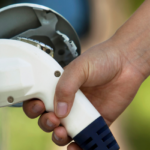 Wyre Forest District Council car parks to have electric vehicle (EV) chargers installed
Wyre Forest District Council car parks to have electric vehicle (EV) chargers installed 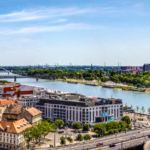 Flowbird Supplies 500 Pay and Display Parking Meters in Bratislava!
Flowbird Supplies 500 Pay and Display Parking Meters in Bratislava!  MaaS: What cities need to do to make it work
MaaS: What cities need to do to make it work 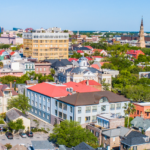 Charleston, SC Updates Its Parking System with Effortless Digital Solutions
Charleston, SC Updates Its Parking System with Effortless Digital Solutions  Clearwater, Florida Launches Pay by Text Solution – No App or Account Required
Clearwater, Florida Launches Pay by Text Solution – No App or Account Required  Carlisle, PA To Update Its Parking System with User-Friendly Solution in 2024
Carlisle, PA To Update Its Parking System with User-Friendly Solution in 2024  Open Payments Launched In Toulouse – Contactless Card Validation!
Open Payments Launched In Toulouse – Contactless Card Validation!  Flowbird and Semitan join forces to make mobility effortless!
Flowbird and Semitan join forces to make mobility effortless!  Meet the Team: David Thompson
Meet the Team: David Thompson  Solving traffic flow – what politicians and policymakers need to know
Solving traffic flow – what politicians and policymakers need to know 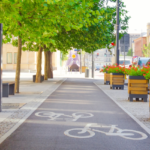 The future of the roadside curb
The future of the roadside curb 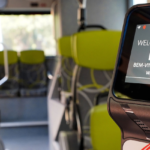 The future of the passenger experience and why effortlessness is the key
The future of the passenger experience and why effortlessness is the key  A guide to your city’s passengers: What you need to know
A guide to your city’s passengers: What you need to know  The 4 roadblocks in your city’s e-mobility plan
The 4 roadblocks in your city’s e-mobility plan  The road to zero-emissions cities (and, the parking when we get there)
The road to zero-emissions cities (and, the parking when we get there)  Why wait to decarbonise our regions?
Why wait to decarbonise our regions?  Flowbird Group takes a step forward in reshaping mobility through a strategic acquisition by EasyPark Group
Flowbird Group takes a step forward in reshaping mobility through a strategic acquisition by EasyPark Group  Park&Charge: Meet our expert
Park&Charge: Meet our expert  Flowbird gives cities a fast-track to e-mobility readiness
Flowbird gives cities a fast-track to e-mobility readiness 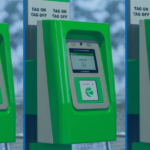 Coming soon to Perth: ‘tap to ride’ with your bank card or device
Coming soon to Perth: ‘tap to ride’ with your bank card or device  What’s next after open-loop transit payments?
What’s next after open-loop transit payments?  What would motivate you to use your car less?
What would motivate you to use your car less? 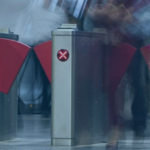 How to Boost the Efficiency of Fare Collection
How to Boost the Efficiency of Fare Collection  Lothian Buses new record: 100,000 taps in a day!
Lothian Buses new record: 100,000 taps in a day!  Smart Transport Ticketing: Benefits for Operators and Passengers
Smart Transport Ticketing: Benefits for Operators and Passengers 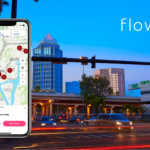 Flowbird App Empowers Tampa’s Parking Experience with Multi-App Integration
Flowbird App Empowers Tampa’s Parking Experience with Multi-App Integration  Meet the team: Justin Pounder
Meet the team: Justin Pounder 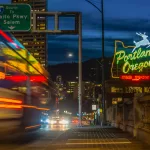 Flowbird, Umojo Partner for Off-Street Solution in Portand
Flowbird, Umojo Partner for Off-Street Solution in Portand  Cash versus digital payments in mobility systems
Cash versus digital payments in mobility systems  Flowbird teams up with Zuora to advance digitalisation and growth
Flowbird teams up with Zuora to advance digitalisation and growth  Flowbird app & Pay by Text now available in Sewickley!
Flowbird app & Pay by Text now available in Sewickley!  FabMob and Flowbird lead the way for accessible, sustainable mobility
FabMob and Flowbird lead the way for accessible, sustainable mobility  Passenger apps: Take 5 operator benefits
Passenger apps: Take 5 operator benefits  Contactless Interac Debit fare payments launch on Laval buses
Contactless Interac Debit fare payments launch on Laval buses  Edinburgh tramline extended to provide a route across the city
Edinburgh tramline extended to provide a route across the city  Take 5… Transport authority benefits of Account Based Ticketing
Take 5… Transport authority benefits of Account Based Ticketing  Parkex | Birmingham | 2023
Parkex | Birmingham | 2023  Flowbird Partners with the City of Minneapolis to Launch New & Improved MPLS Parking App
Flowbird Partners with the City of Minneapolis to Launch New & Improved MPLS Parking App 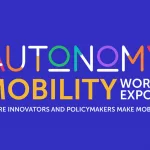 Flowbird presents its vision for connected urban mobility at AMWE in Paris
Flowbird presents its vision for connected urban mobility at AMWE in Paris 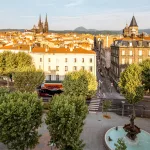 Clermont Ferrand makes the move to open payments on transport
Clermont Ferrand makes the move to open payments on transport 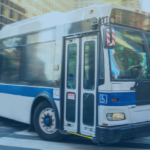 Flowbird’s transport talking points at Transport Ticketing Global
Flowbird’s transport talking points at Transport Ticketing Global 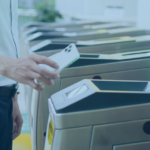 Take 5… Operator benefits of open payments in transport
Take 5… Operator benefits of open payments in transport  Flowbird envisions the transport ticket of tomorrow
Flowbird envisions the transport ticket of tomorrow  Ticketing & payments – a vital enabler of National Bus Strategy
Ticketing & payments – a vital enabler of National Bus Strategy 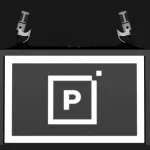 Flowbird announce new additions to the management team further to accelerate growth ambitions within the UK parking sector
Flowbird announce new additions to the management team further to accelerate growth ambitions within the UK parking sector  New London Brings Additional Convenience Parkers with Flowbird App
New London Brings Additional Convenience Parkers with Flowbird App  Podcast: Will transport payments drive a MaaS revolution?
Podcast: Will transport payments drive a MaaS revolution?  Take 5… Passenger benefits of open payments on transport
Take 5… Passenger benefits of open payments on transport  South Orange Parking Authority Updates Its Parking System with User-Friendly Solution
South Orange Parking Authority Updates Its Parking System with User-Friendly Solution  New ParkNYC App Proves to be Unrivaled Success in First 30 Days
New ParkNYC App Proves to be Unrivaled Success in First 30 Days 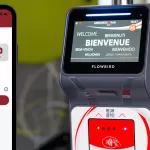 Monapass – One App, One Account, for Open Ticket Mobility
Monapass – One App, One Account, for Open Ticket Mobility  Translink Milestone for National Account Based Ticketing System for Northern Ireland
Translink Milestone for National Account Based Ticketing System for Northern Ireland  Flowbird Announces New CEO
Flowbird Announces New CEO  Flowbird unveils Off-Street Solution at IPMI 2022
Flowbird unveils Off-Street Solution at IPMI 2022  Flowbird is featured in the “Ticketing in Mobility as a Service” handbook published by UITP & STA
Flowbird is featured in the “Ticketing in Mobility as a Service” handbook published by UITP & STA  Flowbird Group acquires Your Parking Space
Flowbird Group acquires Your Parking Space  Transport Ticketing Global | London | 2022
Transport Ticketing Global | London | 2022 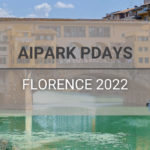 AIPARK Pdays | Florence | 2022
AIPARK Pdays | Florence | 2022 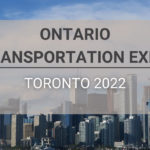 Ontario Transportation Expo | Toronto | 2022
Ontario Transportation Expo | Toronto | 2022 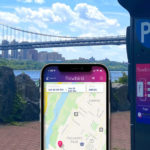 Flowbird Implements Automated Parking System To Palisades Interstate Parks
Flowbird Implements Automated Parking System To Palisades Interstate Parks  Smart City Forum | Warsaw | 2022
Smart City Forum | Warsaw | 2022  Birmingham Jefferson County Transit Authority Partners with Flowbird
Birmingham Jefferson County Transit Authority Partners with Flowbird  PARKEX | Birmingham | 2022
PARKEX | Birmingham | 2022 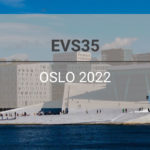 EVS35 | Oslo | 2022
EVS35 | Oslo | 2022  European Mobility Expo | Paris | 2022
European Mobility Expo | Paris | 2022  Konferencja SPP | Grudziądz | 2022
Konferencja SPP | Grudziądz | 2022  Svepark Conference | Gävle | 2022
Svepark Conference | Gävle | 2022 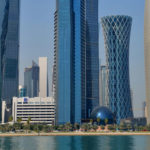 Milipol Qatar 2022
Milipol Qatar 2022  Mobility Hubs | London | 2022
Mobility Hubs | London | 2022 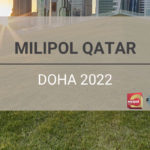 MILIPOL Qatar | Doha | 2022
MILIPOL Qatar | Doha | 2022 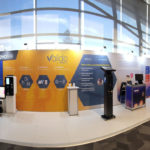 A look back at the PACE 2022
A look back at the PACE 2022  Thank you for visiting us at Intertraffic Amsterdam
Thank you for visiting us at Intertraffic Amsterdam 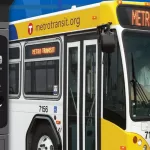 Flowbird Group to Expand Off-Board Fare Payments for Metro Transit
Flowbird Group to Expand Off-Board Fare Payments for Metro Transit 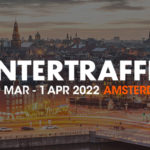 Intertraffic | Amsterdam | 2022
Intertraffic | Amsterdam | 2022  Flowbird completes first ever local authority Electric Vehicle charge point project for Wokingham Borough Council
Flowbird completes first ever local authority Electric Vehicle charge point project for Wokingham Borough Council  Podcast: the rise of open payments in transport
Podcast: the rise of open payments in transport 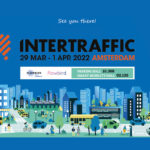 See you soon at Intertraffic Amsterdam 2022!
See you soon at Intertraffic Amsterdam 2022!  Flowbird is excited to share with you the latest news about Hong Kong!
Flowbird is excited to share with you the latest news about Hong Kong! 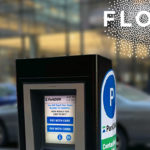 City of Des Moines upgrades to smart multi-space technology with Flowbird Group
City of Des Moines upgrades to smart multi-space technology with Flowbird Group 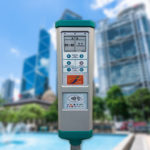 Flowbird trusted by HKT for their Smart City program
Flowbird trusted by HKT for their Smart City program  Flowbird announces a licensing agreement with Concar
Flowbird announces a licensing agreement with Concar 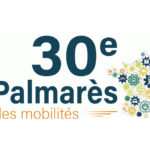 Mobility Awards City Rail & Transport
Mobility Awards City Rail & Transport  A great strategic win in Hamburg
A great strategic win in Hamburg 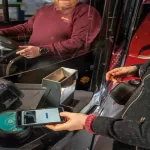 Lothian Adopts Weekly Capping with Support from Flowbird
Lothian Adopts Weekly Capping with Support from Flowbird  Tisséo, Flowbird and CIC deploy Open Payment in Toulouse
Tisséo, Flowbird and CIC deploy Open Payment in Toulouse 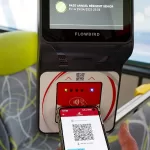 International Spotlight falls on MaaS in Monaco
International Spotlight falls on MaaS in Monaco 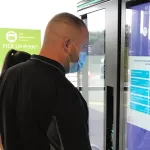 Northern Completes Major UK On-Station Rail Retailing Rollout
Northern Completes Major UK On-Station Rail Retailing Rollout  Flowbird Transforms Urban Mobility in Monaco
Flowbird Transforms Urban Mobility in Monaco 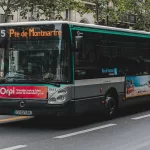 Conduent Transportation and Flowbird Selected to Equip Paris Ile-de-France Mobilités’ Buses and Trams with Next-Generation Onboard Ticketing Platform
Conduent Transportation and Flowbird Selected to Equip Paris Ile-de-France Mobilités’ Buses and Trams with Next-Generation Onboard Ticketing Platform  Flowbird’s Open Payments Expertise Wins Innovation Award
Flowbird’s Open Payments Expertise Wins Innovation Award  STL teams up with Flowbird and other new business partners to deliver a Québec First ― Next-generation credit card payment solution on all Laval buses
STL teams up with Flowbird and other new business partners to deliver a Québec First ― Next-generation credit card payment solution on all Laval buses 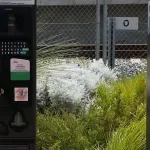 Flowbird Extends Ticketless Parking Across Transperth SmartRider Network
Flowbird Extends Ticketless Parking Across Transperth SmartRider Network 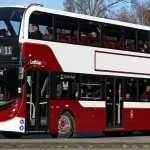 One million ‘taps’…and counting
One million ‘taps’…and counting 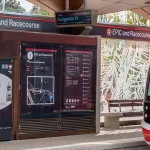 Canberra Launches Smart City Light Rail Network with Flowbird Technology
Canberra Launches Smart City Light Rail Network with Flowbird Technology  Flowbird Releases Mobile Ticketing App – ‘Loop Trolley’ App is Now Live in St. Louis, Missouri
Flowbird Releases Mobile Ticketing App – ‘Loop Trolley’ App is Now Live in St. Louis, Missouri 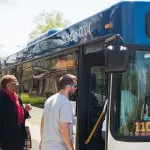 IndyGo Partners with Flowbird to Modernise Fare Collection System
IndyGo Partners with Flowbird to Modernise Fare Collection System 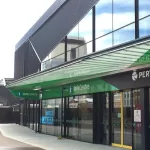 Transperth Extends Partnership with Flowbird Transport Intelligence
Transperth Extends Partnership with Flowbird Transport Intelligence 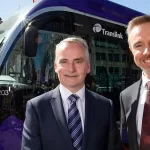 World-class ticketing system glides into Belfast
World-class ticketing system glides into Belfast 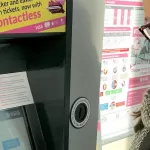 Edinburgh Trams Taps into Contactless Benefits
Edinburgh Trams Taps into Contactless Benefits 